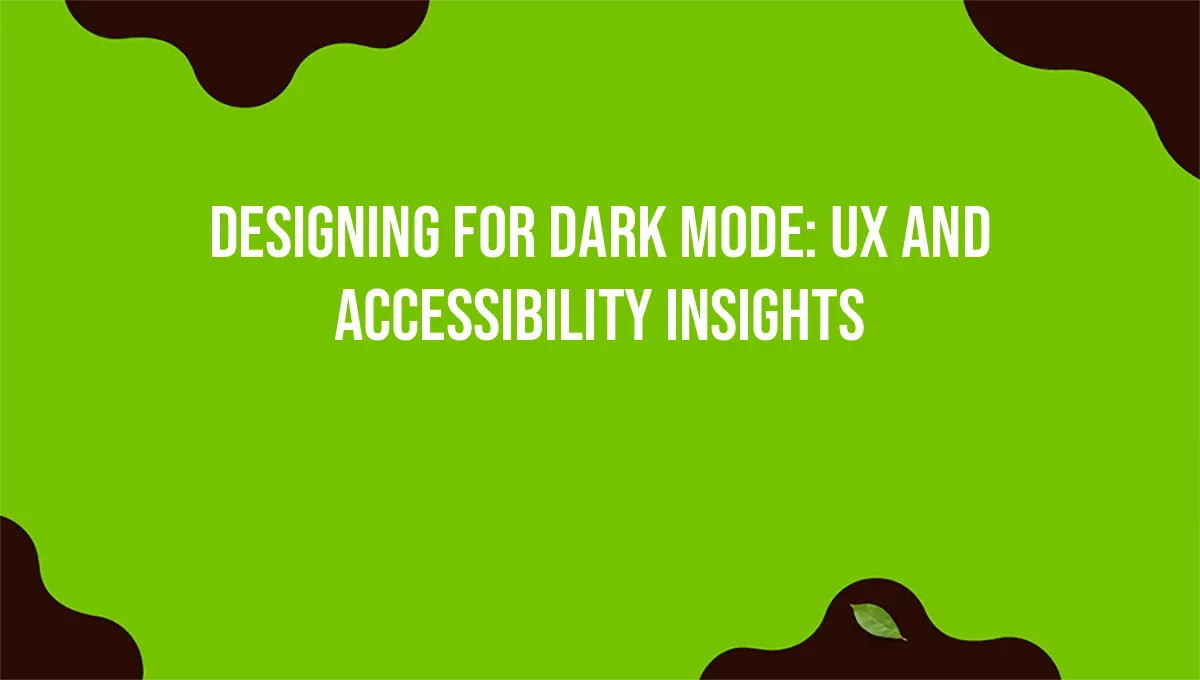Designing for dark mode: UX and Accessibility Insights
In a world where user experiences dictate the success of digital platforms, dark mode is no longer just a trend; it’s a necessity. as business owners, startups, and marketing teams, understanding how to design for dark mode can significantly enhance your brand’s outreach, user interaction, and overall satisfaction.At Cham Agency, our commitment is to bridge the gap between innovative design and excellent user experience. Let’s dive deep into the nuances of dark mode design, explore its importance for UX, and understand why accessibility should always be at the forefront of our designs.
Why embrace Dark Mode?
the Shift in User Preferences
Recent studies have shown that nearly 80% of users prefer dark mode for its sleek aesthetic and reduced eye strain. Major platforms, from operating systems to social media apps, are embracing this style, showcasing its growing relevance in digital design. If your site or app isn’t equipped for dark mode, you’re not just missing out on aesthetic appeal; you’re potentially alienating a significant portion of your audience.
Brand Loyalty and Engagement
Adapting to dark mode isn’t solely about following a trend; it’s also about fostering brand loyalty. Businesses like Twitter and Instagram that incorporate dark mode have reported increased user engagement. When users feel agreeable-which dark mode can facilitate-they spend more time interacting with your brand. This interaction translates to higher conversion rates, so the question isn’t weather to implement dark mode, but rather how effectively you can do it.
Principles of Effective Dark Mode Design
1. Understand Color Contrast
Color contrast is crucial in dark mode design. The use of high contrast between foreground (text, icons) and background colors enhances readability and reduces eye strain. This isn’t just a matter of aesthetics; it’s a directive rooted in accessibility standards.
Actionable Tip: Start with a black or dark gray background and test various color palettes for text and visual elements. Tools like Adobe Color can definitely help you assess the contrasts to ensure compliance with WCAG (Web Content Accessibility guidelines).
2. Embrace Color Psychology
In a dark theme, colors can take on a new life.colors like blue or green may appear more vibrant, whereas reds and yellows can become overwhelming. Understanding color psychology can help you set the mood for your application or website.
Case Study: Consider how Spotify uses a dark background to elevate its colorful album artwork. The result is an immersive experience that draws users into their music collection rather than distracting them.
3. Focus on Minimalism
Less is often more, especially in dark mode.Visual noise can become more pronounced against a dark background. Leveraging a minimalist approach in your design not only elevates key features but also allows users to focus on what’s significant.
Actionable Strategy: Conduct A/B testing on your designs.Compare a visually rich dark mode against a minimalist version to gauge user preferences and engagement duration. You might be surprised by the results!
Accessibility Matters: Designing for Everyone
Ensuring that your dark mode is accessible is non-negotiable. Accessibility isn’t just about compliance; it’s about inclusivity. Here are key dimensions to integrate accessibility into your dark mode designs:
1. Text legibility
Ensure that your text is distinctly readable on dark backgrounds. The contrast ratio should be at least 4.5:1 for normal text and 3:1 for large text.
2. Avoid Overuse of Dark Colors
Using pure black (#000000) can cause visual discomfort.Rather, opt for a dark gray background. It’s easier on the eyes and tends to present better contrasts with colored text and images.
3. provide Customization Options
Consider allowing users to toggle between light and dark modes or, even better, to personalize the colors of their interface. This flexibility enhances the user experience as it accommodates individual needs and preferences.
Final Thoughts: The Future Is Dark
As a forward-thinking agency, Cham Agency recognizes the potential of dark mode in shaping user experience and driving engagement. By embracing dark mode and applying these design principles, you’re not only modernizing your brand but also spotlighting inclusivity and accessibility.
Digital marketing is about making connections, and designing for dark mode is a step toward connecting with a broader audience. It’s time to incorporate these insights into your strategy,making sure your users feel comfortable,engaged,and empowered when interacting with your brand.
Take Action Now
Ready to elevate your digital presence? Embrace dark mode design today. At Cham Agency, we are here to support you in crafting user-centric designs that resonate. Reach out to us for personalized guidance, and let’s illuminate your pathway to success-whether in light or dark.
bookmark this post-it’s your go-to guide for designing with dark mode in mind. Your audience deserves it,and your brand will thrive because of it.





